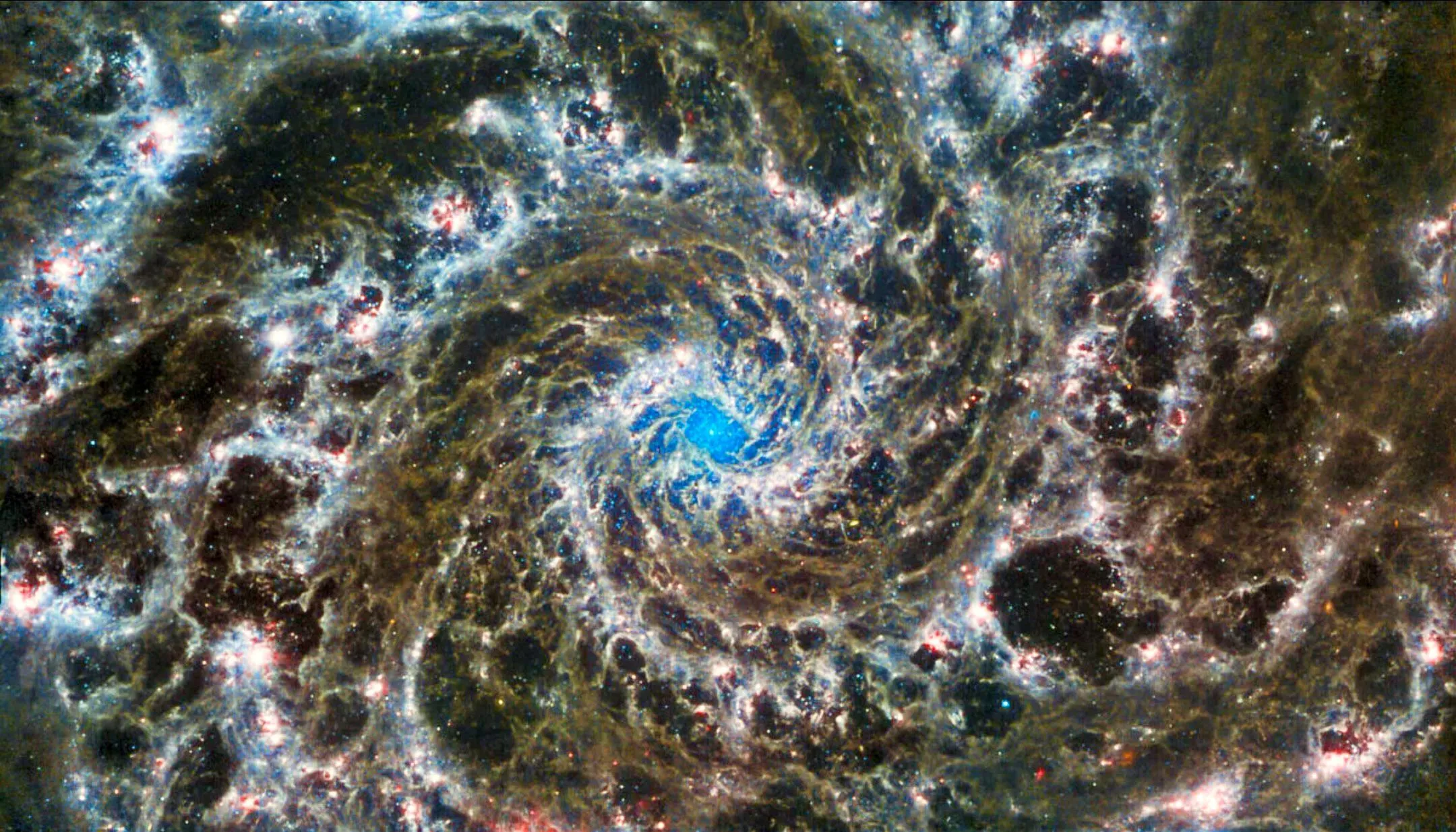The Phantom Galaxy (M74): Webb's Infrared Unveiling
The cosmos is full of wonders, and among them, the "Phantom Galaxy," officially known as Messier 74 (M74), has long intrigued astronomers. Nestled approximately 32 million light-years away in the constellation Pisces, this celestial masterpiece is a prime example of a face-on spiral galaxy. However, its beauty has historically been elusive, earning it the moniker "Phantom" due to its remarkably low surface brightness, making it a challenging target for even large telescopes.
Thanks to the unparalleled infrared vision of the James Webb Space Telescope (JWST), we now have breathtaking new perspectives on this enigmatic galaxy, revealing intricate details previously hidden from our view.

Credit: James Webb, NASA & CSA, J. Lee
Why "Phantom"? Unmasking the Elusive Galaxy
The name "Phantom Galaxy" isn't merely poetic; it's a direct reflection of M74's observational characteristics. Its diffuse nature and low surface brightness mean that the light it emits is spread out over a large area, making it appear very faint against the dark backdrop of space. This characteristic has historically made it a difficult object for amateur and even professional astronomers to observe clearly, leading to its ghostly reputation.
Webb's Revelation: A Grand Design Unveiled
The James Webb Space Telescope, with its extraordinary infrared capabilities, has pierced through the faintness and revealed the true splendor of M74. Webb's sharp vision has brought into focus delicate filaments of gas and dust that elegantly wind outwards in the galaxy's grandiose spiral arms. These structures are crucial for understanding star formation and galactic evolution.
Moreover, Webb's infrared gaze provides an unobscured view of the galaxy's very heart. Unlike many galaxies where dense clouds of gas and dust can obscure the central region, M74 possesses a unique lack of gas in its nuclear area. This allows for a pristine view of the nuclear star cluster at the galaxy's core, offering astronomers a direct look at the dynamics and stellar populations within its bustling center.
M74 is also classified as a "grand design spiral" galaxy. This designation is given to spiral galaxies whose arms are prominent, well-defined, and extend clearly from the galactic core, maintaining a distinct, organized structure. This contrasts with "flocculent" spiral galaxies, which have patchier, more fragmented arms. Webb's stunning images vividly showcase M74's textbook grand design, highlighting the symmetrical beauty that makes it a significant subject for astrophysical study.
The insights gained from Webb's observations of M74 are not just visually spectacular; they provide invaluable data for understanding galaxy formation, the lifecycle of stars, and the intricate dance of gas and dust across cosmic scales. The Phantom Galaxy, once a challenging enigma, is slowly revealing its secrets through the eyes of our most advanced space observatory.




